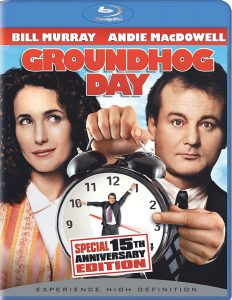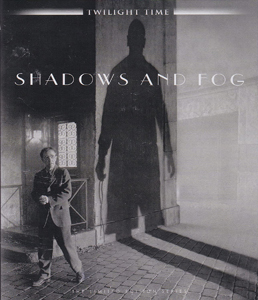Aesthetically, “Shadows and Fog” (1991) is the closest Woody Allen has come to making a horror movie. As the story unfolds over one night of a Strangler stalking a city, cinematographer Carlo di Palma gives us frame-worthy old-school black-and-white shots, as we’d expect.
Bleak and bland
But not only is the mood not scary, there’s hardly a mood at all. Unless “bleak and mildly unpleasant” is a mood. What’s worse, there’s little point to “Shadows and Fog.”
Woody Allen plays his usual nebbish. Kleinman is an unenthusiastic member of a vigilante group tasked with tracking down the serial killer (Michael Kirby, one of several imposingly large actors in the cast, which mutes his presence).

“Shadows and Fog” (1991)
Director: Woody Allen
Writer: Woody Allen
Stars: Woody Allen, Mia Farrow, John Malkovich
Allen gives himself all the good lines (“A deranged person is supposed to have the strength of 10 men. I have the strength of one small boy … with polio.”). He has many zingers in the abstract, but few that flow smoothly.
I think the notion of three rival vigilante groups is intended as a broad comedic comment on something from the real world, but I don’t know what.
Wasted cast
The strained relationship between circus performers John Malkovich and Mia Farrow (she’s a sword swallower, for the sake of an obvious one-liner) has a mild spark but falls flat as the film goes down other paths.
“Shadows and Fog” has to be on the short list of best-cast films that does the least with that cast. These stars either have embarrassing one-note arcs or are in the film so briefly that I assume they simply wanted to check a Woody Allen film off their bucket list.
John Cusack’s rather gross arc is that he sees the supposedly irresistible Farrow and pays her $700 for sex. Given less screen time, and making no impact, are Madonna, Jodie Foster, Kathy Bates, Lily Tomlin, John C. Reilly, Kurtwood Smith, Fred Gwynne, William H. Macy, Julie Kavner, Wallace Shawn and “Young Frankenstein’s” Kenneth Mars.
The most horror-centric element is Donald Pleasance riffing on his famous Dr. Loomis from “Halloween.” Here he’s a mortician who thinks the nature of evil might be found via autopsies. His morgue is filled with Strangler victims – not evil people – so it doesn’t quite add up.
Pleasance’s presence
When the Strangler tracks down Pleasance, there’s no sense of horror because “Shadows and Fog’s” overall tone is so insubstantial.
The use of black-and-white and fog from start to finish means there’s no range of mood. Consider a scene where Allen and Farrow look over the sleeping city at night, reflecting on how they feel freer at this time of day. It’s a nice moment, but it exists in a vacuum.
“Shadows and Fog” could’ve used its setting to make a straightforward funny parody of night-strangler films. Allen’s arc fits with that, but it’s never clear why in the world he’s roped into being one of the vigilantes — and yet so much screen time is spent on that issue.

It’s like the sets and fog machines were available on the cheap from a just –wrapped horror film and Allen had one day to write a screenplay and call up friends to fill out the cast. “Shadows and Fog” is on the short list of Allen’s weakest films, and its reason for being is certainly the foggiest.

